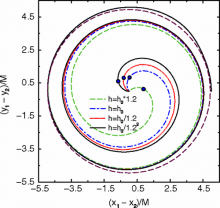
Abstract
We perform the first fully nonlinear numerical simulations of black-hole binaries with mass ratios 100:1. Our technique for evolving such extreme mass ratios is based on the moving puncture approach with a new gauge condition and an optimal choice of the mesh refinement (plus large computational resources). We achieve a convergent set of results for simulations starting with a small nonspinning black hole just outside the ISCO that then performs over two
orbits before plunging into the 100 times more massive black hole. We compute the gravitational energy and momenta radiated as well as the final remnant parameters and compare these quantities with the corresponding perturbative estimates. The results show a close agreement. We briefly discuss the relevance of this simulations for Advanced LIGO, third-generation ground based detectors, and LISA observations, and self-force computations.